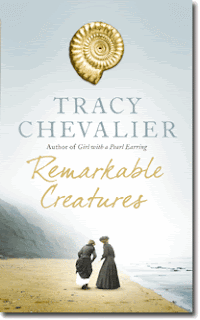I was once out shopping with a friend when I spotted a killer pair of Ralph Lauren sunglasses. When I told her that I really liked them, but that at the same time I already had many pair of sunglasses and didn’t need yet another, she sniffed and pronounced, “My dear, it’s not a matter of need. It’s a matter of want. Buy them.”
While I’ve lived by her words many times over the years, I must admit that I dragged my feet when e-readers first came out. Why buy something that’s the size of a book, that you can hold in your hand and read like a book when you could just read a book? And why pay for a book, when you could get it free at the local public library?
Then, Barnes and Noble came out with the NOOK color, an Android tablet fronted by a 7-inch color touchscreen with 8GB of internal memory and a microSD card slot for cards up to 32GB. It functions as both an e-reader
and a web browser. All for $249.00 – much cheaper than an iPad or notebook. Curious, I went on the
Barnes and Noble website in order to invesigate and found that it offered lots of capability. The NOOK sounded like a good deal. It sounded like something I didn’t absolutely need, but certainly wanted. And what do you know – Greg took it upon himself to surprise me with one for Xmas. Here are a look at the features:
1. You can download books into the NOOK in seconds. Using the NOOK to read a book is so easy, you don’t even need the instructions. Just tap on a book cover and it opens. A swipe at the corner of the screen turns the page, just like a “real” book. When you’re done reading, turn the NOOK off and when you turn it on again, it remembers what page you were on and opens to it. Downloaded books are stored on your “shelves,” which you can customize. My NOOK shelves are named tbr and done. Yes, tbr, as in to be read. No more tottering piles of tomes by the side of my bed. Still a pile, true, since every book ever written is not offered as a NOOK download as yet and since some books, especially non-fiction titles, were simply not meant to be read in any other format than that of a good, old fashioned hard-bound book. I plan on using my NOOK for fiction only. But that may change.


2. The NOOK has built-in wifi that allows you to browse the web. The only thing that’s a tad difficult to do is to click on individual results, as the screen is pretty small. There’s a plus (+) and minus (-) icon that comes up fairly intuitively in the lower righthand corner of the screen that allows you to magnify the screen when you’re performing a function that requires data entry. And you can call it up any other time you need it. Having web capability in an e-reader is a plus – you can shop for more book titles, check your email, Google to your hearts’ content, etc. It’s handy, especially when on the road.
3. NOOK’s built-in MP3 player lets you listen to audio books. Boy, did I get excited over this one! I cannot wait to do this – I can “read” and do needlework at the same time – oh, joy! But now we open another can of worms – can I download any audiobook? And a cursory browse on the web shows that I may be able to download e-books, including audio books, from my public library. Technology begets further technology and now I’ll have to spend time investigating these options, but it’s nice to know they’re available.
4. You can subscribe to magazines and each issue is automatically delivered to your NOOK each month. Or you can buy single issues. Have yet to try this . . . . as with non-fiction books, I think reading magazines in this format may take some getting used to.
5. The NOOK’s LendMe function means that books can be shared once with a friend who also has a NOOK at no cost, for up to 14 days. From the B and N website: “NOOKcolor makes it easy to borrow books from friends for up to 14 days. Just pull up your list of contacts, then browse a friend’s NOOKcolor library to choose the book you want to borrow. Within seconds, NOOKcolor will send an email to your friend with a request to borrow that book. Once they give the ok, the book will appear right on your NOOKcolor in seconds ready for you to download and enjoy.” This sounds pretty exciting, until you realize that the number of lendable books is fairly limited. While I have current titles on my tbr shelf (Ruth Rendell’s Portobello), and have even pre-ordered titles, (such as Maeve Binchey’s Minding Frankie, due out on March 1), only two of the titles on my shelf have a LendMe icon – The Black Moth by Georgette Heyer (my cost – .99) and Barchester Towers by Trollope (my cost – $1.99). LendMe might not be as fabulous as I first thought. Even Austen’s Pride and Prejudice isn’t lendable.
6. The NOOK is supposed to last 8 hours on a charge. The more you use the web, the more power you use up. Even when used just for reading, I find a single charge lasts around 6 hours.
As an e-reader the NOOK color is fabulous. How did I get by without it? True, I’m now spending money on books that I would have gotten free from the library, but then again, I’m not 187th on the list for new releases. Even so, I’m sure I’ll still be borrowing books from the library, the old fashioned way, but the NOOK is a useful tool and a wonderful addition to my bookshelves.
Understandably, the appearance of my NOOK has prompted much book browsing for me of late, in addition to reflections about favorite authors whose work I haven’t read in a while. And Victoria has a Kindle, which she uses often. She and I met at a Barnes and Noble store here in Florida recently and 
;spent some time discussing favorite authors, old and new, and we’ve decided to bring you our author recommendations in forthcoming On The Shelf posts, beginning on January 31st. It is our fondest hope that you’ll find a few new favorites amongst them, too.

 Everything you want to know about Mary Stewart and her wonderful novels can be found here. She has written many, including the Merlin books, a wonderful re-telling of the King Arthur saga in five volumes. She is also well known for her romantic suspense novels, some once known as neo-gothic or woman-in-jeopardy. Lots of suspense and a happy ending, the perfect gentle result even if the action can be bone-chilling from time to time. Born in 1916, Mary Stewart was awarded an honorary doctorate in 2009 from her alma mater Durham University, where she also taught before her marriage to Sir Frederick Stewart in 1945. Perhaps the most gentle of her books is Rose Cottage, 1997. But I think my favorite, aside from the Merlin books, is Touch Not the Cat, from 1976. Here’s the marketing blurb: “Bryony Ashley knows that her family’s grand estate is both hell and paradise — once elegant and beautiful, yet mired in debt and shrouded in shadow. Devastated by her father’s sudden strange death abroad, she is nonetheless relieved to learn the responsibility of running Ashley Court has fallen to a cousin. Still, her father’s final, dire warning about a terrible family curse haunts her days and her dreams.”
Everything you want to know about Mary Stewart and her wonderful novels can be found here. She has written many, including the Merlin books, a wonderful re-telling of the King Arthur saga in five volumes. She is also well known for her romantic suspense novels, some once known as neo-gothic or woman-in-jeopardy. Lots of suspense and a happy ending, the perfect gentle result even if the action can be bone-chilling from time to time. Born in 1916, Mary Stewart was awarded an honorary doctorate in 2009 from her alma mater Durham University, where she also taught before her marriage to Sir Frederick Stewart in 1945. Perhaps the most gentle of her books is Rose Cottage, 1997. But I think my favorite, aside from the Merlin books, is Touch Not the Cat, from 1976. Here’s the marketing blurb: “Bryony Ashley knows that her family’s grand estate is both hell and paradise — once elegant and beautiful, yet mired in debt and shrouded in shadow. Devastated by her father’s sudden strange death abroad, she is nonetheless relieved to learn the responsibility of running Ashley Court has fallen to a cousin. Still, her father’s final, dire warning about a terrible family curse haunts her days and her dreams.”






















